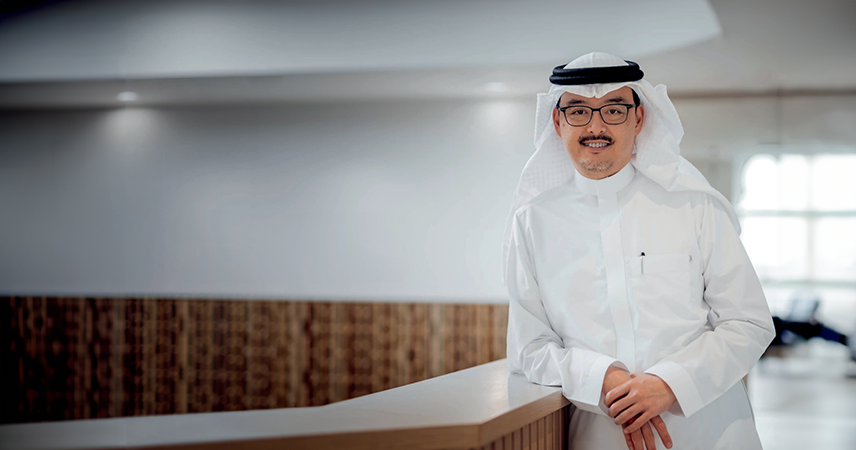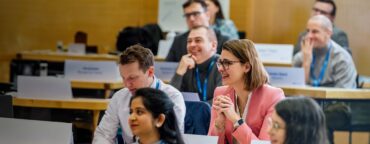
Abdulrahman Ibrahim had an unusual take on his experience visiting Silicon Valley: that the model wasn’t for him, or the region for which he has responsibility. This was owing to the high level of homelessness, with a large number of people “living in caravans, and we see them on the main roads. They cannot afford to rent apartments. If this is the outcome, or one of the outcomes of the Silicon Valley [system], I don’t believe that we need to replicate this. They succeeded as an ecosystem to produce the most advanced, powerful, and profitable organizations, such as Google, Apple, and the like. Yes, we cannot deny that. But at what expense?”
“My inner self was striving to make a positive impact in society, rather than making the shareholders richer.”
As the Chief Data and Innovation Officer at Al-Madinah Region Authority, Abdulrahman has an overview of the development of the city of Madinah in western Saudi Arabia. His study for the EMBA at IMD played a role in the designation of Madinah as a smart city.
He learned that a city authority cannot apply for smart status, but has to wait for it to be selected. “Then three or four months later, a course started, [and] we needed to write a case. For IMD to accept a proposed case, a professor has to accept to supervise it, and at least four students agree to join in writing this case, so I suggested Madinah Smart City.”
It was selected as a case, and he worked on it with three colleagues. The existence of a credible case study at a major educational institute – moreover, one that supports the smart cities initiative – helped Madinah gain the coveted status soon after.
IMD had already played a role in supporting and directing Abdulrahman in a major career change. Until 2019, he had had a conventional, highly successful career as an executive in the private sector, gaining promotions and becoming a CEO. He had always wanted to study for an MBA or EMBA, but lacked the time owing to work and family commitments. He was approached to take on a role in public service. The challenge appealed to him, and as there would be a drop in salary, he negotiated a sponsorship deal to study for the EMBA.
The experience transformed not only his career, but his sense of purpose in work and life. “The IMD experience, for me, was a life changer. I did not imagine it would be that impactful… When I moved from the private sector to the public sector, I questioned myself, with less pay and a more rigid environment: am I in the right place? And then the question developed into, what is my purpose?”
He adds: “And it became clearer when I realized that my inner self was striving to make a positive impact around my society, my country, the world, rather than making the shareholders richer.”
The EMBA helped him embed an approach to strategic management that involves starting with a clear understanding of one’s values and desired social impact and working back from this to establish policies and technologies.
Such an approach is intuitive, but can be difficult to implement in practice. He and his Authority leadership colleagues decided on the emerging LoRaWAN technology network for smart street lighting based on its long-term potential and compatibility with the city’s push to adopt sustainable standards. However, this attempt has clashed with the preferences of the telecom companies, which gained income from the use of established 4G and 5G networks. This led to tough negotiations, best handled by “understanding the motives, the different motives, of different
stakeholders.”
He is responsible for data and innovation, but bases strategies on findings from workshops with citizens – a process that has resulted in six priorities: well-being, tourism, environment, mobility, economy, and old neighborhoods.
Objectives are defined by the United Nations’ 17 Sustainable Development Goals. The Authority has published a Voluntary Local Review (VLR) showing the data by which progress towards nine SDGs – well-being scores, health and environmental indicators and so on – will be judged. “It’s not a marketing tool. We flagged the red indicators we lack and mentioned the green indicators, where we are doing well and orange, which is something in between. And it’s very transparent. The objective of the VLR is to set the needle towards the right direction for Madinah’s sustainable development.”
A highly important dimension of Madinah’s governance is its global importance as the second holiest city in Islam and the site of the Prophet’s Mosque. There are 1.5 million permanent residents in the city and some 14 million visitors annually, many of whom are pilgrims, and there are plans to double this by 2030. So, the planners must construct hotels and scale up infrastructure while maintaining its historic appeal and architectural quality. Abdulrahman talks about wanting to create the “most tranquil” smart city in the world.
“The IMD experience, for me, was a life changer. I did not imagine it would be that impactful.”
Abdulrahman and his colleagues have conceived the idea of the entire city as a museum, using technology to make accessible background stories to visitors – every street and square has some history attached. “The objective is to provide an immersive learning experience by leveraging
the latest technologies and catering to visitors of different backgrounds and tech proficiencies.”
There is a neat circularity about deploying the technology of the 21st century to recognize and help curate features of historical and sacred significance. Technology is powerful, and so is an understanding of business strategy – but ultimately, their proper purpose is to enrich our quality of life


